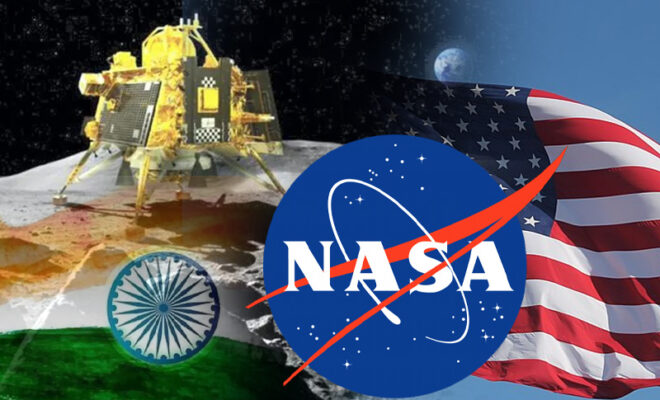After India’s Moon Landing, Europe’s Astronaut Command over ISS

India just accomplished a historic first by successfully landing an airplane on the south pole of the moon, a tremendous feat of scientific accomplishment. India is the first country on Earth to accomplish such a feat, putting it at the forefront of lunar exploration. A fresh breakthrough in the field of space exploration is taking place while India celebrates its accomplishment: a European astronaut is about to take over as the commander of the International Space Station (ISS). This assignment is a component of a long-term plan to build a permanent facility on the moon. These developments represent a turning point in the history of space travel and a fundamental change in how people think about exploring the moon and other planets.
India’s Lunar Success
An important milestone in space exploration was reached on August 23, 2023, when India’s Chandrayaan-3 lander module successfully landed on the south pole of the moon. In addition to its technological prowess, India’s achievement is remarkable for its strategic location in the realm of lunar exploration. The south pole of the moon is particularly important because scientists think there may be frozen water and rich materials there. India’s accomplishment highlights the growing interest in lunar exploration, with both public and private organizations focusing on the moon’s undiscovered resources and possibilities for scientific research.
European Leadership in Space
Danish astronaut Andreas Mogensen is preparing to take control of the International Space Station (ISS) for the upcoming five months, which coincides with India’s victory on the moon. This task is a component of a bigger plan that intends to build a permanent moon base. One of the many goals of Mogensen’s mission is to test a ground-breaking 3D metal printer that has the potential to transform space manufacturing. Since less material must be transported from Earth, the capacity to create metallic components away from Earth has significant ramifications for long-term lunar and interplanetary missions.
The ISS command also acts as a platform for gathering valuable information about human space travel, which is essential for organizing next lunar and Martian missions. The rising international cooperation in space exploration is highlighted by the European Space Agency’s partnership with NASA’s Artemis project. The European Union’s participation in the Lunar Gateway project, which aims to build a permanent settlement around the moon, demonstrates its dedication to leading space exploration and research.
Future Prospects and Collaborative Endeavors
The difficulties encountered during the Apollo period are a long cry from the state of lunar exploration now. Modern technology has opened up access to the moon, allowing not just governments but also private firms to launch lunar missions. The moon is now more accessible than ever before thanks to decreasing costs and improved technology, making it a viable location for scientific research, resource discovery, and even potential habitation.
Also Read:- iPhone 15 Pro Models to Shelve Gold and Purple Color Options
The joint objective of extending human presence beyond Earth is exemplified by international cooperation, as demonstrated in the Artemis expedition. A key first step toward reaching Mars, which is the primary destination, is the establishment of a lunar outpost. The idea of humanity becoming a multi-planetary species is getting closer to reality as space agencies and private businesses continue to engage in space research.
The significant developments taking place in the field of space exploration are highlighted by India’s historic lunar landing and Europe’s plans for lunar exploration. India has become a major player in space research as a result of its successful landing on the south pole of the moon. Meanwhile, developments in ISS command and lunar projects show how committed Europe is to influencing the course of space exploration.
A future where the moon serves as a staging area for interplanetary exploration and perhaps even a stepping stone to even further away celestial bodies is made possible by humanity’s collective forays into space.



